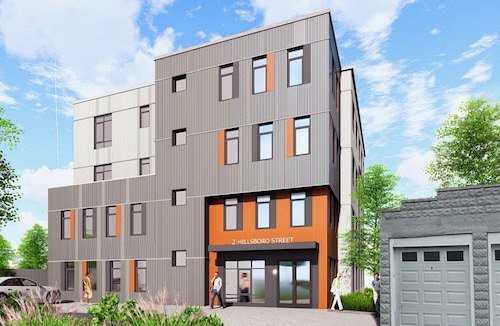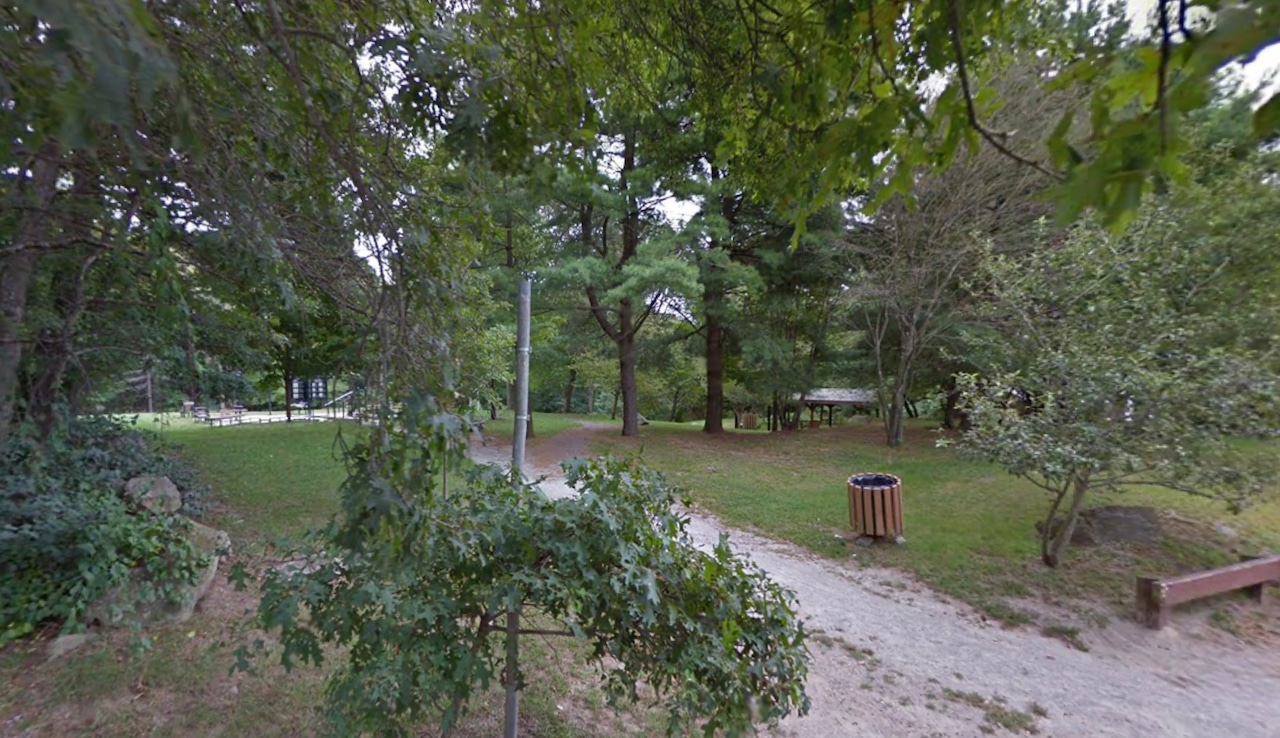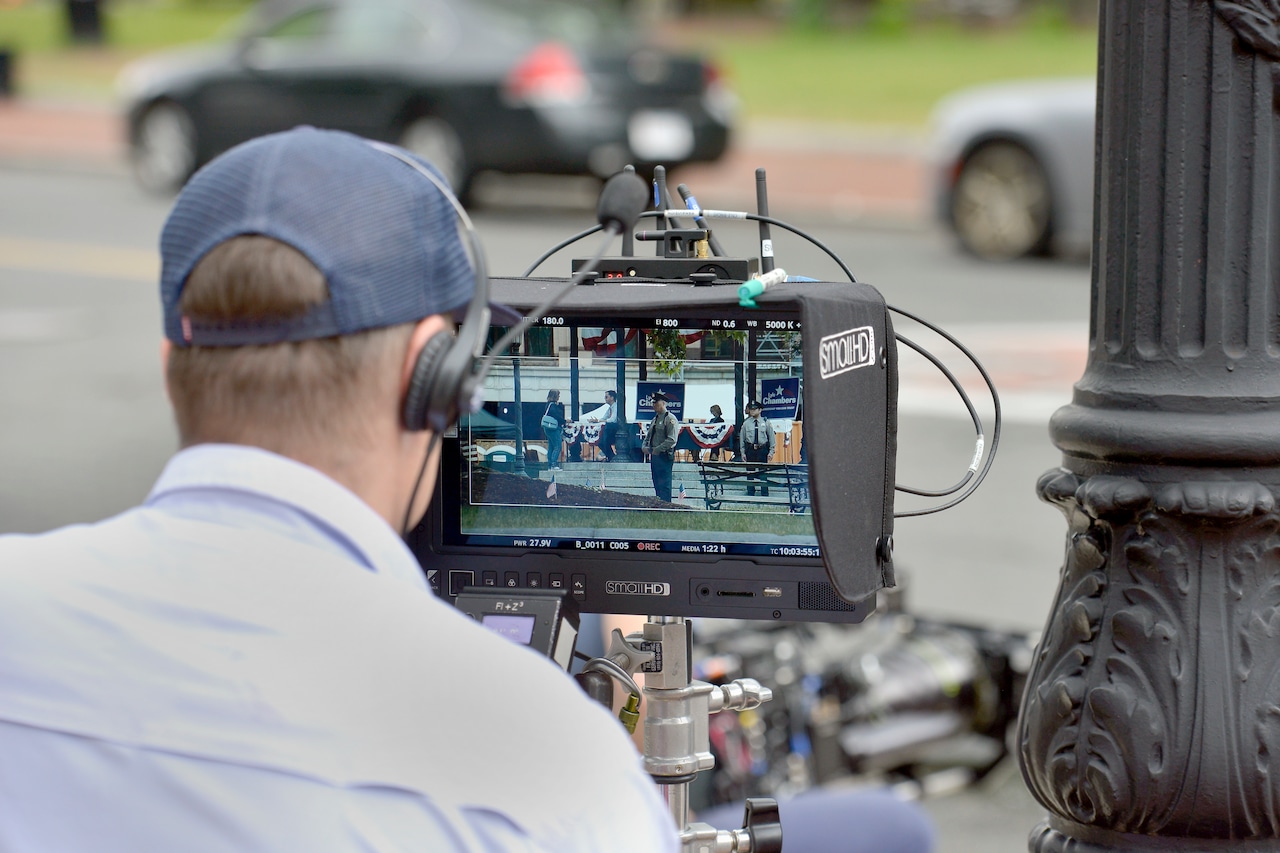In an Upham’s Corner neighborhood dense with 19th century triple-deckers and industrial buildings, at least a third of artists working at Humphreys Street Studios are first-generation immigrants — from Venezuela, Argentina, France and Haiti.
There are painters, metal workers, stone carvers, furniture makers, graphic designers, and a blacksmith, the latter’s presence known by the studios’ iconic yellow smokestack. They’re anywhere from 25 to 80 years old, from street artists to university professors.
It’s a rich, diverse enclave in an already diverse — but changing — Dorchester neighborhood, one that was recently listed on the National Register of Historic Places, and is home to a significant Cape Verdean population.
Cristina Todseco, a theatrical set designer, has had a studio there since 2004. She said the community — about 45 artists and creative small businesses — is an atmosphere of “production, creativity and energy.”
It’s something increasingly rare that had to be preserved.
And it was.
In November 2022, the artists prevailed in a multiyear effort to save the 125-year-old former dry cleaning campus from private developers. They did it with help from the city of Boston, nonprofit funders, and New Atlantic Development, a “mission-driven” Boston-based real estate company that has worked with artist communities before.
It was a creative $2.8 million deal that used $1.7 million in city dollars, including American Rescue Plan funds, and gave majority ownership to artists who work in the building — an example of the interlinked partnerships necessary in order to keep property affordable today.
The art studios are now governed by a nonprofit board. And a much-awaited addition on a vacant adjacent lot is upcoming — 21 live/work condominiums for homeownership, 18 of which will have a preference for Boston-certified artists.
The housing project, at neighboring 2 Hillsboro Street, received its final green light from the Boston Planning and Development Agency earlier this month.
Based on income limits set for the units, an artist making 80% of the area median income could purchase a one-bedroom for $219,500 or a two-bedroom for $258,500.

A rendering of the planned 2 Hillsboro Street development in Dorchester, where 18 homeownership units will have preference for artists.New Atlantic Development
“The intention was affordable housing always and for it be artist preference, to really support the community we’re actively in,” said Catherine Infantino, a project manager for New Atlantic Development. “We know how much the arts need both places to work and places to live that are affordable. It’s a struggle, and to have housing that’s a low-entry makes it one less thing to worry about and feasible to stay in the city.”
Infantino knows, because she and her husband, both musicians, have lived in artist-preference, rent-to-own housing in the South End since 2006. They’ve raised their family there.
Artists are among the scores of people being priced out of Boston. A recent monthly rent report from the site Zumper showed the median rent for a one-bedroom apartment in the Greater Boston area continues to hover around $3,000 on the highest end.
And just last week, Zillow released a new report showing inventory in the Boston area is currently lower than anywhere else in the U.S.
Perhaps different from other professions, artists feel the real estate crunch in two ways: places to live are becoming harder to find, but so are places to do their work.
Ami Bennitt, an arts administrator and marketing specialist who helped launch the #ARTSTAYSHERE Coalition out of the Humphreys Street Studios anti-displacement campaign, said the list of artist studios in Boston that have been lost to redevelopment goes “on and on and on and on.”
Read more: How Lynn is trying to solve housing crisis amidst high costs, low vacancy on North Shore
“When you’re in one of these communities, yes, you go as intended for your individual work, but what you end up getting out of it is becoming part of a community,” Bennitt said. “That’s brick and mortar, that’s not online. Human beings showing up onsite to make work with their hands, and sometimes together.”
The decline has happened over decades, but particularly in the last five-to-ten years.
Former Boston Mayor Tom Menino started recognizing that artists were sleeping in warehouses in Fort Point and the South End back in the early 2000s, Infantino said.
It was clear the spaces weren’t suitable or up to code for residential living, but also apparent was a desire for live/work communities.
The thinking then was, Infantino said, “Let’s make these appropriately habitable spaces and acknowledge the need that people are living there because it’s affordable, as well as being part of a community.”
Menino launched the Artist Space Initiative in 2001, an effort to keep artists in the city amid rising real estate values of the time.
Today the market is even worse, making the venture incredibly challenging, especially without immediate cash in hand to save a property from getting snatched up by a private developer.
In 2022, Boston, Cambridge and Somerville joined together with the Metropolitan Area Planning Council in an initiative to protect existing arts and cultural spaces, as well as create new ones.
Boston Mayor Michelle Wu earmarked millions of ARPA dollars for her Office of Arts and Culture.
Despite the many efforts at play, artist displacement has become increasingly common.
Bennitt said artists pushed out of Boston are going to Lowell, Haverhill, New Bedford and Pawtucket, R.I., where studio space is still available — and affordable.
“It’s not enough just to go somewhere else,” she said. “There need to be policies and protections.”
The 2 Hillsboro Street development
All units at the new 2 Hillsboro Street development adjacent to Humphreys Street Studios will be income-restricted, while 18 will have preference for artists who are certified by the city of Boston.
The Mayor’s Office of Arts and Culture offers an artist housing certification, which qualifies people for affordable live/work spaces. In that regard, the city has shown vested interest in saving artists from displacement, and maintains an active list of live/work and work-only spaces.
A planned mix of studio, 1-, 2-, and 3-bedrooms, the 2 Hillsboro Street units are designed with additional square footage for workspace. The four-story building, a five-minute walk from the Upham’s Corner commuter rail stop, will also have common workspaces, according to New Atlantic’s application.
Read more: Meet the volunteer lawyers trying to protect Boston tenants from eviction
The added workspace is critical, Tedesco said, because “not every living situation is good for art-making.” For artists who use heavy equipment or require ventilation because of fumes, a typical apartment doesn’t suffice for a live/work scenario.
Several artists at Humphreys Street Studios have already expressed interest in the condominiums, which are on track to break ground in November. Prices will range from $180,800 to $378,000.
Infantino noted it’s common for people who qualify based on the area median income to hear of developments like 2 Hillsboro Street and think, “they don’t mean me.” But oftentimes, they do, and people shouldn’t be afraid to reach out for more information, she said.
The city-run Boston Home Center, for example, is a “one-stop shop” for questions.
“There are people out there willing to help get people into these situations,” said Infantino. “There are so many more that aren’t applying who need to know about these. College kids at MassArt could come out and have a home. Get them stabilized and into a place where they can stick around and keep doing their art.”






